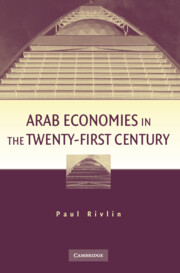8 - Morocco
Reforms That Did Not Cure
Published online by Cambridge University Press: 05 June 2012
Summary
Morocco is a country of sharp contrasts. Although it has among the most impressive demographic trends in the Arab world, it suffers from mass poverty and high rates of unemployment and illiteracy. The economic reforms that Morocco has undertaken since the 1980s, with the backing of the IMF and the World Bank, have improved its finances but the economy still suffers from slower growth than the average for developing countries. The instability of growth resulting from large fluctuations in agricultural production remains a serious problem. It has more political freedom than most Arab countries, but this has not provided a pluralistic basis for economic development.
Demographic Trends
Between 1980–5 and 2000–05, Morocco's population growth rate fell from 2.56 percent to 1.48 percent a year, one of the lowest growth rates in the Arab world. In 2005, the Moroccan population was estimated at almost 31.5 million and the annual increase in the population is about four hundred and fifty thousand a year (see Tables 8.1 and 8.2).
The move toward having smaller families, the key factor in demographic transition, was dramatic and continues to be. In 1979–80, the average number of births per woman was 5.6; by 2003–04 it had fallen to 2.5. The gap between rural and urban averages continued but in rural areas the decline in the number of births per woman was most dramatic. In 1979–80, it was 6.6 and by 2003–04 it was three.
- Type
- Chapter
- Information
- Arab Economies in the Twenty-First Century , pp. 174 - 191Publisher: Cambridge University PressPrint publication year: 2009



